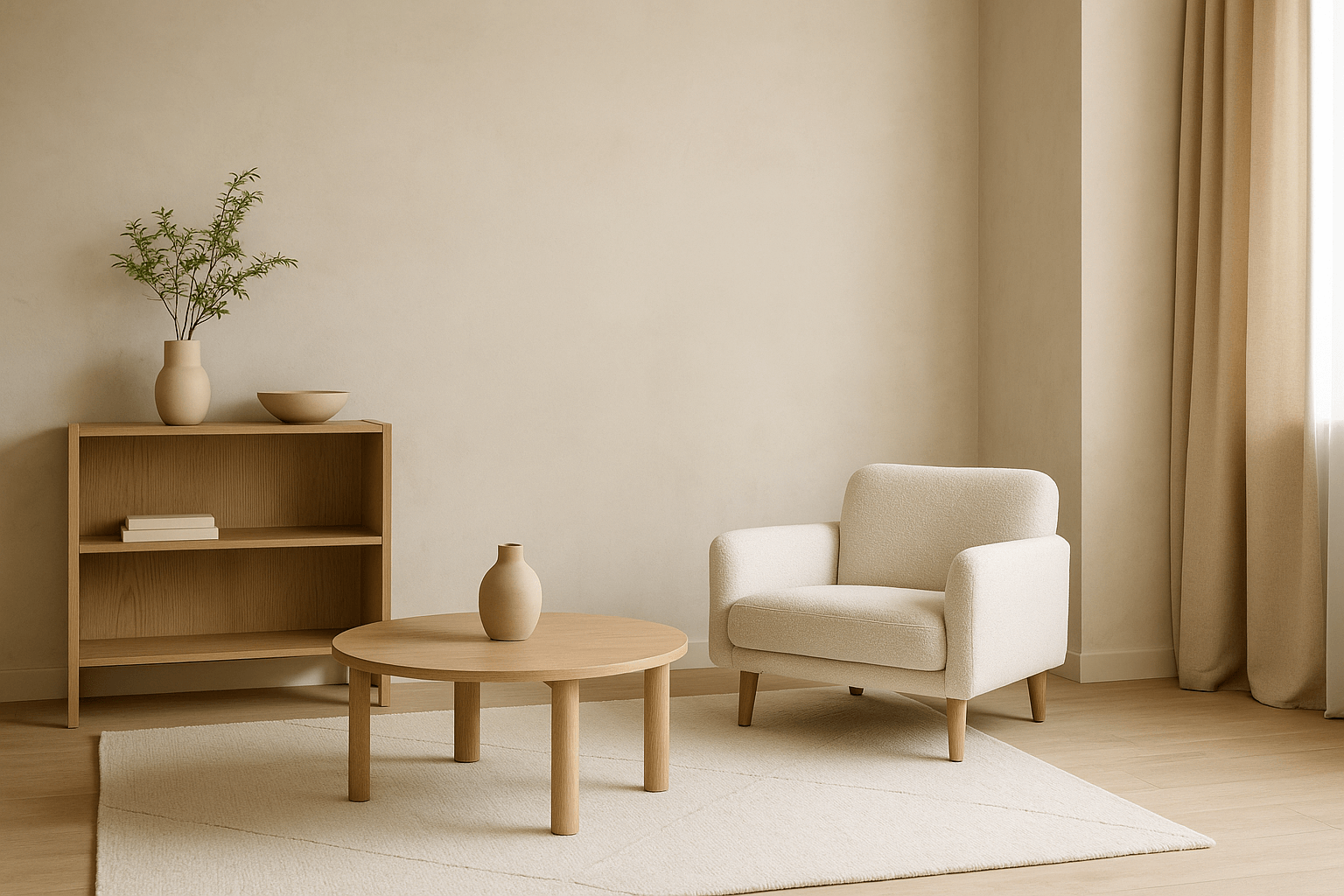Why Lighting Is Everything in Minimal Design
In a minimalist interior—where color is limited and decoration is restrained—light becomes a primary design tool. It doesn’t just illuminate your home; it defines it.
Light influences how we feel in a space. It can make a room feel soft and serene, or sharp and energizing. The way you use both natural and artificial light is key to creating atmosphere in a minimalist home.
Natural Light: Your Best Design Partner
1. Enhances Negative Space
Sunlight reveals texture, volume, and shadow—especially important in minimalist rooms where fewer objects are used.
2. Connects Indoors to Nature
A minimalist space with sunlight pouring in blurs the line between outside and in, reinforcing the calming effects of nature.
3. Shifts with Time
Natural light changes throughout the day, giving your space a quiet dynamism without ever adding more “stuff.”
How to Maximize Natural Light
-
Use sheer curtains to diffuse, not block, the light.
-
Keep window areas uncluttered for full exposure.
-
Opt for matte, light-reflective surfaces—they bounce soft light instead of creating glare.
-
Use mirrors sparingly to amplify light and open up small rooms.
Artificial Light: Sculpting Minimalism After Dark
Artificial light allows you to shape mood and visual hierarchy. In minimalist design, lighting fixtures aren’t afterthoughts—they're key architectural features.
Types of Lighting in Minimal Spaces:
Ambient (General)
Soft, diffused light that fills the room—think overhead pendant lights or flush mounts.
Task
Focused lighting for function—reading lamps, under-cabinet lighting, bedside sconces.
Accent
Creates visual interest or highlights—small spotlights, LED strips, or wall washes that define architectural details or textures.
Choosing the Right Lighting Fixtures
Stick to Simple Forms
Go for fixtures that have clean, sculptural shapes—domes, cylinders, or linear bars in neutral materials.
Warm > Cool
Use warm white bulbs (2700K–3000K) to create a cozy atmosphere and soften the hard lines of minimal interiors.
Let Light Replace Decor
In minimalist homes, lighting can serve dual purpose: illumination + visual interest. A sculptural wall sconce or pendant can act as your focal point.
Room-by-Room Lighting Tips
Living Room
Layer ambient light with task lighting (e.g., a floor lamp near the sofa) to support flexibility and mood.
Kitchen
Use recessed lights or pendants for overall light, and LED strips under cabinets for function and subtle depth.
Bedroom
Sconces or table lamps provide a calm alternative to ceiling lights. Opt for dimmable bulbs.
Bathroom
Wall-mounted fixtures on either side of the mirror reduce harsh shadows and keep the space feeling clean and serene.
Final Thoughts
Lighting is one of the most underrated tools in minimal design. It sculpts your space, sets the tone, and elevates your home from simple to intentional. With thoughtful placement and restraint, you can use both daylight and artificial light to create balance, comfort, and quiet beauty.
Minimalism is not just about what you see—it’s about how you feel in the space. And lighting defines that feeling.















